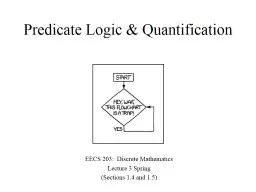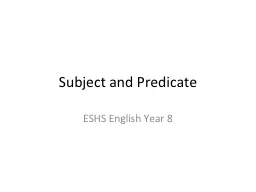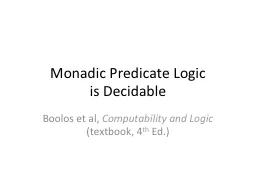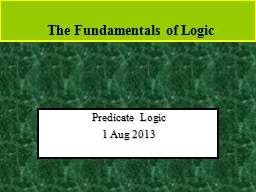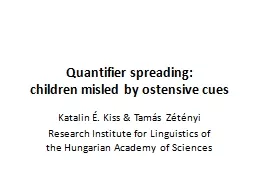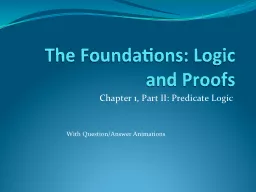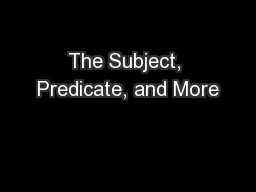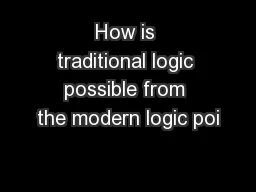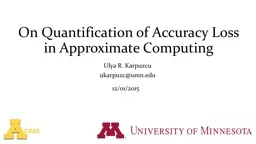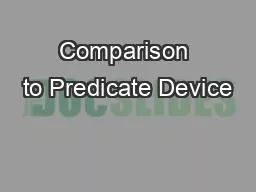PPT-Predicate Logic & Quantification
Author : myesha-ticknor | Published Date : 2017-06-05
EECS 203 Discrete Mathematics Lecture 3 Spring Sections 14 and 15 Things you should do Homework 1 due today at 3pm Via gradescope Directions posted on the website
Presentation Embed Code
Download Presentation
Download Presentation The PPT/PDF document "Predicate Logic & Quantification" is the property of its rightful owner. Permission is granted to download and print the materials on this website for personal, non-commercial use only, and to display it on your personal computer provided you do not modify the materials and that you retain all copyright notices contained in the materials. By downloading content from our website, you accept the terms of this agreement.
Predicate Logic & Quantification: Transcript
Download Rules Of Document
"Predicate Logic & Quantification"The content belongs to its owner. You may download and print it for personal use, without modification, and keep all copyright notices. By downloading, you agree to these terms.
Related Documents

